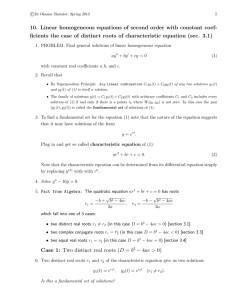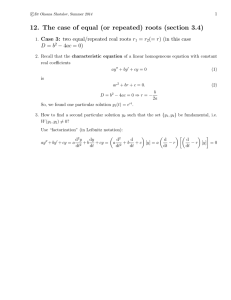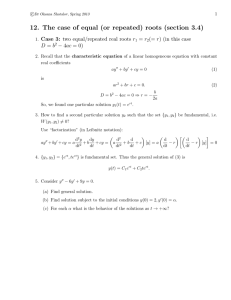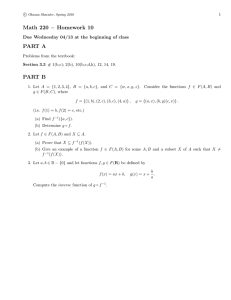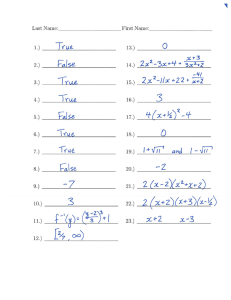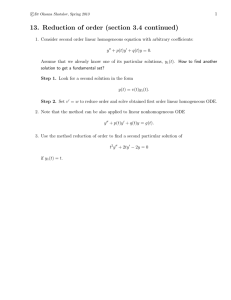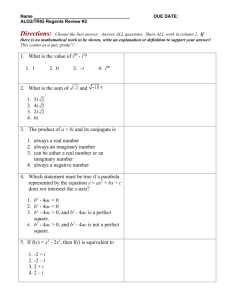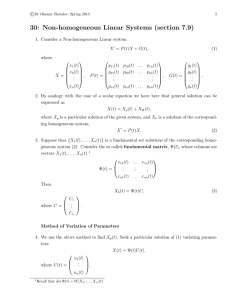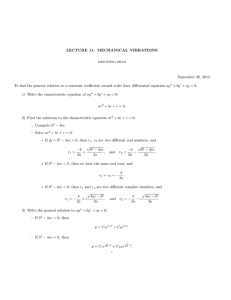Document 10583194
advertisement
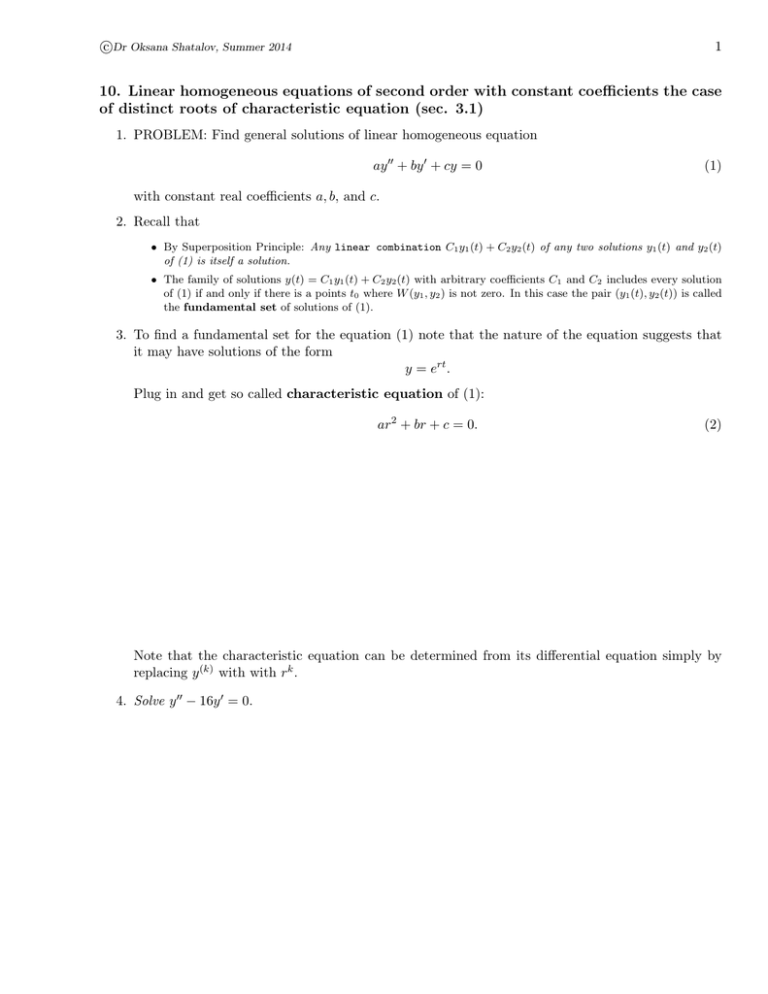
c Dr Oksana Shatalov, Summer 2014 1 10. Linear homogeneous equations of second order with constant coefficients the case of distinct roots of characteristic equation (sec. 3.1) 1. PROBLEM: Find general solutions of linear homogeneous equation ay 00 + by 0 + cy = 0 (1) with constant real coefficients a, b, and c. 2. Recall that • By Superposition Principle: Any linear combination C1 y1 (t) + C2 y2 (t) of any two solutions y1 (t) and y2 (t) of (1) is itself a solution. • The family of solutions y(t) = C1 y1 (t) + C2 y2 (t) with arbitrary coefficients C1 and C2 includes every solution of (1) if and only if there is a points t0 where W (y1 , y2 ) is not zero. In this case the pair (y1 (t), y2 (t)) is called the fundamental set of solutions of (1). 3. To find a fundamental set for the equation (1) note that the nature of the equation suggests that it may have solutions of the form y = ert . Plug in and get so called characteristic equation of (1): ar2 + br + c = 0. (2) Note that the characteristic equation can be determined from its differential equation simply by replacing y (k) with with rk . 4. Solve y 00 − 16y 0 = 0. c Dr Oksana Shatalov, Summer 2014 2 5. Fact from Algebra: The quadratic equation ar2 + br + c = 0 has roots √ √ −b + b2 − 4ac −b − b2 − 4ac r1 = , r2 = 2a 2a which fall into one of 3 cases: • two distinct real roots r1 6= r2 (in this case D = b2 − 4ac > 0) [section 3.1] • two complex conjugate roots r1 = r2 (in this case D = b2 − 4ac < 0) [section 3.3] • two equal real roots r1 = r2 (in this case D = b2 − 4ac = 0) [section 3.4] Case 1: Two distinct real roots (D = b2 − 4ac > 0) 6. Two distinct real roots r1 and r2 of the characteristic equation give us two solutions y1 (t) = er1 t , y2 (t) = er2 t (r1 6= r2 ). Is this a fundamental set of solutions? 7. Consider 3y 00 − y 0 − 2y = 0. (a) Find general solution. (b) Find solution satisfying the following initial conditions: y(0) = α, real parameter. y 0 (0) = 1, where α is a c Dr Oksana Shatalov, Summer 2014 3 8. Consider y 00 + (a + 1)y 0 + (a − 2)(1 − 2a)y = 0 where a is a real parameter. (a) Determine the values of the parameter a, if any, for which all solutions tend to zero as t → ∞. (b) Determine the value of the parameter a, if any, for which all (nonzero) solutions become unbounded as t → ∞.
